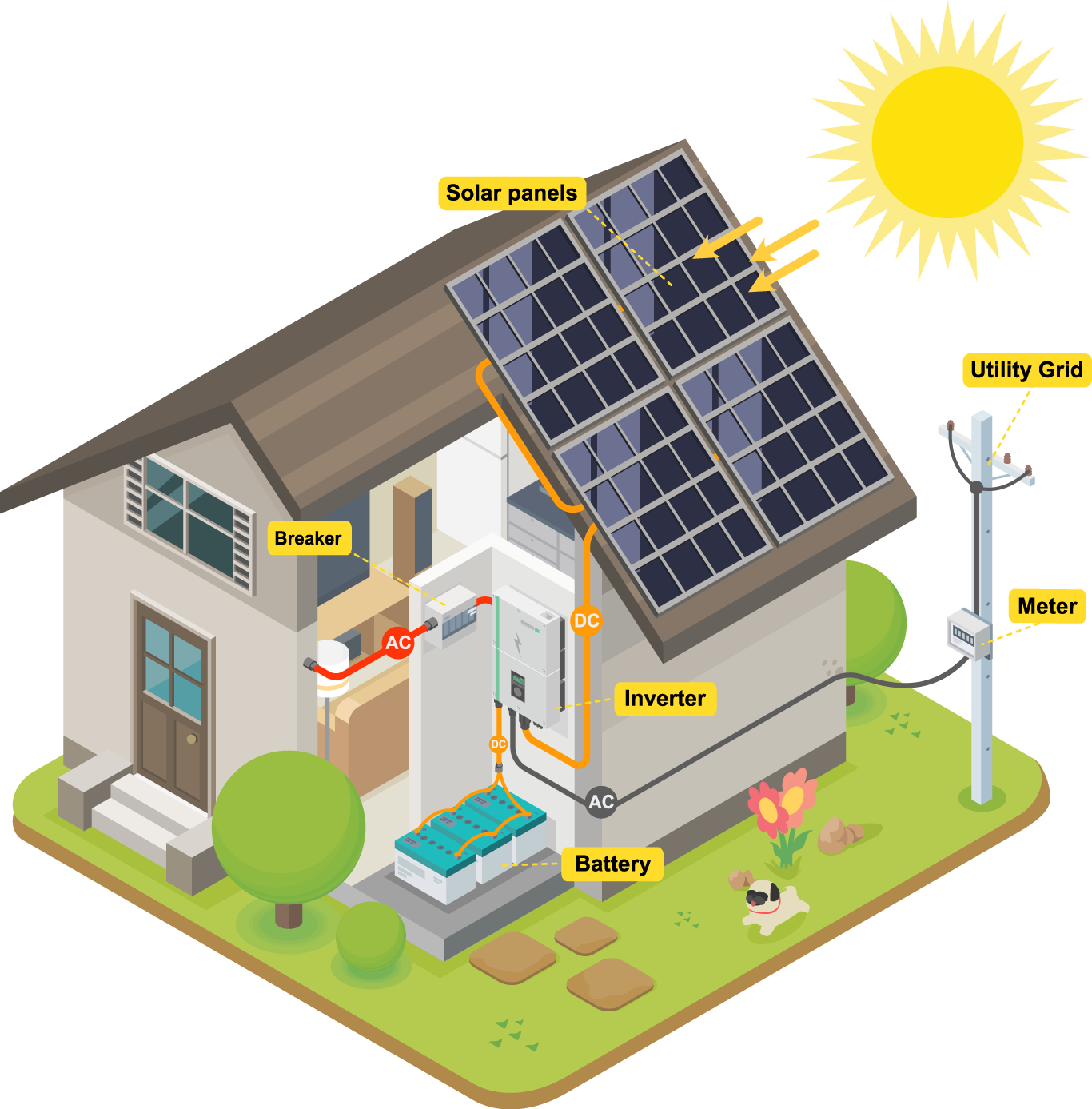Rooftop Solar
Say hello to owning your own rooftop solar array, lowering your monthly energy costs, and increasing the value of your home!
What are the benefits of Rooftop Solar?
How does Rooftop Solar work, step-by-step?
Why partner with PTM Solar?
Are there programs to help with system costs?
A Sustainable Future
Owning your own solar array creates the greatest benefit possible. Install on your roof or on the ground, reduce your electricity costs, increase the value of your property, add longevity to your roof (for systems installed on roofs), and lock in better energy rates for the foreseeable future. Grants and tax incentives are available to minimize expenses, but their availability is going away. NY utilities currently offer net metering, which omits the need for batteries, saving tens of thousands of dollars. Purchasing now “grandfathers” you into the current compensation model, which is the best in the U.S.

How Rooftop Solar works, step-by-step...
Solar Panels
- Solar panels (also called photovoltaic panels) are made up of many solar cells that convert sunlight into direct current (DC) electricity.
- When sunlight hits the solar cells, the energy from the light particles (photons) excites electrons, creating an electric current.
- This DC electricity is the foundation of the energy the system will use and store.
Inverter
- Most homes and appliances use alternating current (AC), not DC.
- The inverter's job is to convert the DC electricity from the solar panels into usable AC electricity.
- Some systems use microinverters attached to each panel, while others use a single centralized inverter.
Batteries (Optional but Useful)
- Battery storage allows excess energy generated during sunny hours to be stored for later use (like at night or during outages).
- When energy demand is high or solar production is low, the system can draw from these batteries instead of pulling from the grid.
- This makes a solar setup more self-sufficient and resilient.
Meter
- A special bi-directional electric meter tracks electricity flow both ways: energy you consume and energy you send back to the grid.
- This meter helps enable *net metering*, a system that gives you credit for excess energy you contribute to the grid.
- It ensures you're billed correctly—paying only for the net amount of electricity you use.
Utility Grid
- The electric grid acts as a backup and overflow system.
- On cloudy days or when usage is higher than solar output, you can draw power from the grid.
- When your system generates more than you use, the excess flows into the grid, reducing strain on utility providers and potentially earning you credits.
Why partner with PTM Solar?
Free Quote & Proposal
FREE solar energy consultation, system design and proposal that includes a comprehensive energy analysis with 25-year system performance and return on investment calculations so you know exactly what you are getting.
Easy Financing
PTM offers the opportunity to finance with multiple lenders with different models for their loans, with varying limits, and varying guidelines. A credit score of 640 or better, with a good debt-to-income ratio, is often the minimum requirement.
Set it & Forget it
The average home system needs very little maintenance or attention at all (potentially none for the lifetime of the system). You will have access to a monitoring system online or via an app to check functionality whenever you desire. Your system’s production is calculated using weather data from the past 30 years in your locale, so cloud cover, snow accumulation, etc. are not a concern, as they are factored into the sizing of your system. Snow does not even need to be removed from the panels!NYSERDA Grant Information
NY makes consistent, significant efforts to increase the benefit of going solar for its residents. This is because there is currently a government mandate that NY will run 70% on renewable energy by the year 2030.
As such, with NYSERDA’s project approval (based upon projected system energy efficiency), if the system meets its minimum standards, your project will receive a grant for $0.20 per watt of solar installed. This grant is scheduled to decrease by volume.

Apply for a free rooftop solar consultation
Use this form to provide information to PTM Solar. This information will be used by PTM Solar to review available grants and other funding in your area in order to create a free proposal. An authorized Solar Professional from PTM Solar will contact you to discuss this free proposal.


